With its abundant forests, mountains, lakes, hot springs, and gorgeous waterfalls, it’s little wonder that Arkansas got nicknamed ‘the natural state’.
It’s a great place for nature tourism, and if you’re out and about in Arkansas, you’re almost certain to see some beautiful sparrows, no matter what time of the year.
While some sparrow species merely pass through the state on their annual migrations, here we’ll get to know 20 of the species that spend substantial time here either during winter, summer, or all year round.
Sparrows in Arkansas, Starting With the Most Common
White-throated Sparrow
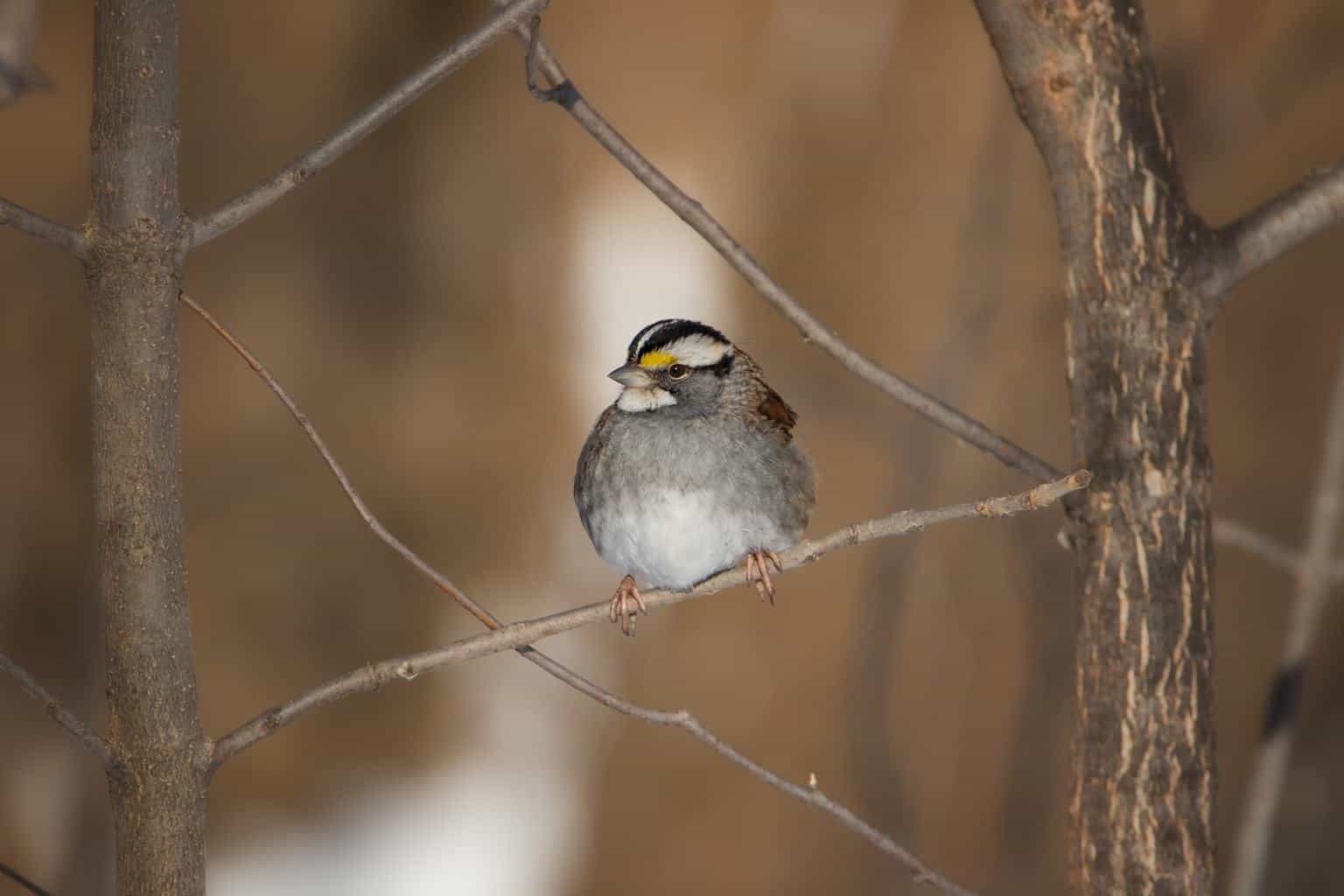
- Species Name: Zonotrichia albicollis
- Length: 6.3-7.1 in (16-18 cm)
- Weight: 0.8-1.1 oz (22-32 g)
- Wingspan: 7.9-9.1 in (20-23 cm)
Despite only being a winter visitor in Arkansas, the fact that the white-throated can be seen almost everywhere during this time wins it the title of being the most common sparrow in the state.
These medium-sized sparrows have distinctive black and white (or light brown) stripes on the crown of their heads, yellow eyebrows, and light gray color chests. The melancholic whistling song of this common bird is also easy to recognize.
White-throated sparrows can be readily attracted to your backyard by offering them millet and sunflower seeds at your bird table or feeding platform.
Dark-eyed Junco
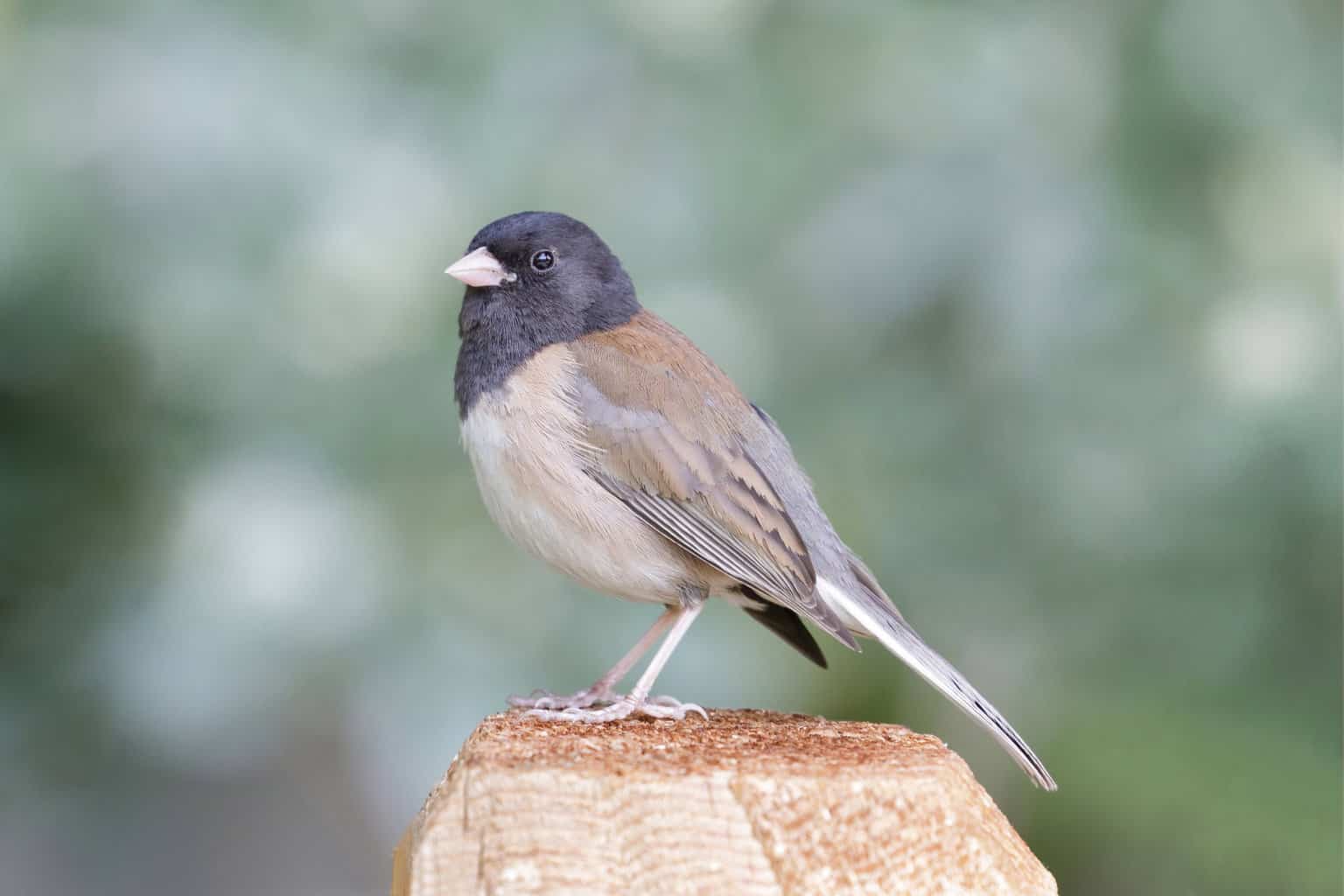
- Species Name: Junco hyemalis
- Length: 5.5-6.3 in (14-16 cm)
- Weight: 0.6-1.1 oz (18-30 g)
- Wingspan: 7.1-9.8 in (18-25 cm)
Dark-eyed juncos are another sparrow that fills the skies of Arkansas during winter. Between October and April, large flocks of them descend on the state and can be seen both in towns and the countryside.
Sometimes also known as the ‘snow bird’, dark-eyed juncos are incredibly hardy and the dark plumage on their bodies stands out beautifully in snowy landscapes. They’re regular visitors to backyard feeders during the colder months too.
Their noisy, trilling whistle is unmistakable once learned, but they make various other quieter cheeps and clicking calls to communicate with each other, too.
House Sparrow
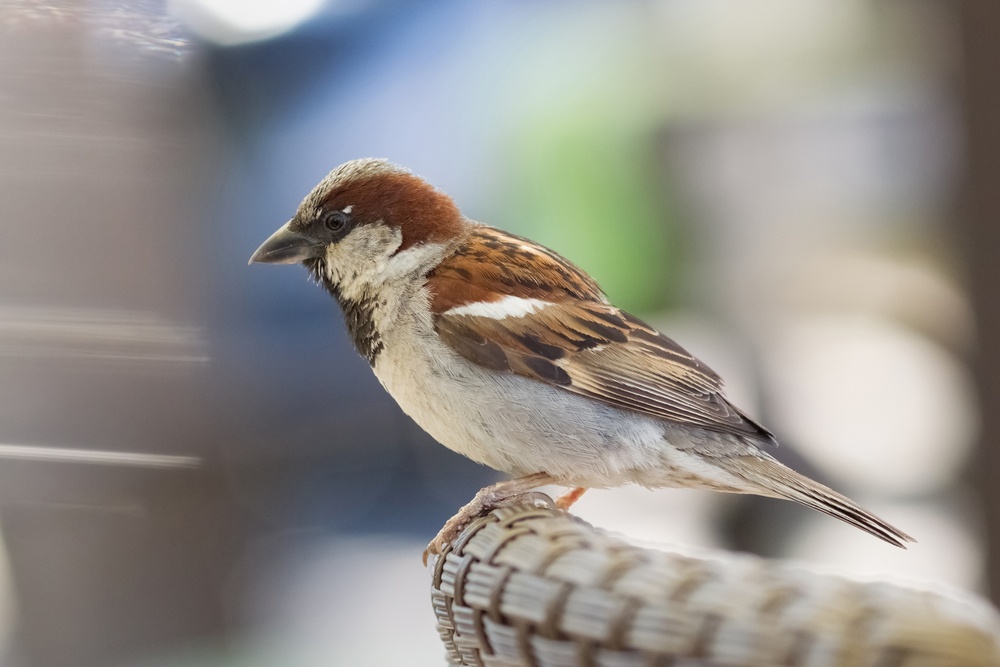
- Species Name: Passer domesticus
- Length: 5.9-6.7 in (15-17 cm)
- Weight: 0.9-1.1 oz (27-30 g)
- Wingspan: 7.5-9.8 in (19-25 cm)
The house sparrow is the most common of all the sparrows that remain in Arkansas throughout the year, and it’s not even a native bird!
House sparrows were introduced to the United States in 1852 from Europe and their presence has been met with a mixed reception. Because house sparrows don’t migrate, they can often dominate the nesting grounds of native birds.
On the plus side, there’s no denying that house sparrows are cute birds, and their noisy flocks can bring cheer to dull winter days.
Chipping Sparrow
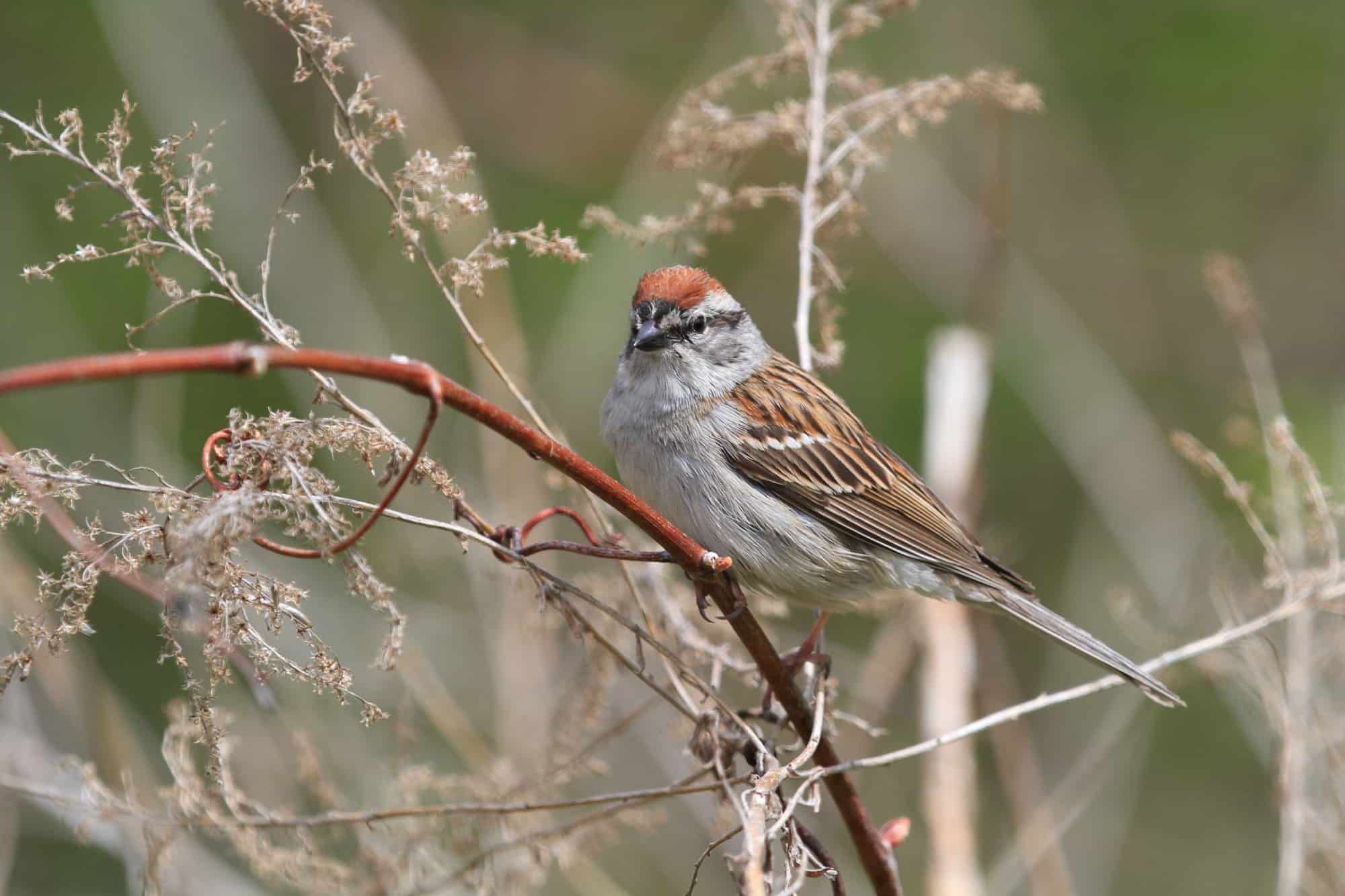
- Species Name: Spizella passerina
- Length: 4.7-5.9 in (12-15 cm)
- Weight: 0.4-0.6 oz (11-16 g)
- Wingspan: 8.3 in (21 cm)
You’re more likely to see chipping sparrows in Arkansas during the summer months when large numbers of them come to nest here, but there are also plenty to be seen in winter, too.
With their rusty crown feathers, gray chests, and black eye lines, these medium-sized sparrows are fairly easy to recognize. Their trilling call is also one of the noisiest and most persistent in the woodland spring chorus, so it’s a good one to know and recognize!
Song Sparrow

- Species Name: Melospiza melodia
- Length: 4.7-6.7 in (12-17 cm)
- Weight: 0.4-1.9 oz (12-53 g)
- Wingspan: 7.1-9.4 in (18-24 cm)
As you might imagine, song sparrows are one of the most vocal of all sparrows, and can become very noisy indeed as the breeding season approaches!
Interestingly, scientists have discovered that song sparrows adapt their song according to their environment – their country song is different from the one they sing in the city!
Song sparrows are winter visitors in Arkansas when large flocks of them descend on that state after their breeding season in Canada. An enthusiastic visitor to your backyard feeder, these common birds will lap up black oil sunflower seeds and millet that you leave out for them.
Eastern Towhee

- Species Name: Pipilo erythrophthalmus
- Length: 6.8-8.2 in (17.3-20.8 cm)
- Weight: 1.1-1.8 oz (32-52 g)
- Wingspan: 7.9-11.0 in (20-28 cm)
You’re just as likely to see Eastern Towhees during the summer as in winter in Arkansas. Even though some migration occurs, birds coming in from the north are likely to replace summer visitors that overwinter further south.
Eastern Towhees are fantastic-looking birds. Their black, tufted crest, white breast, and red flanks make them one of the most colorful sparrows. Weighing nearly two ounces, they’re also one of the biggest.
Field Sparrow
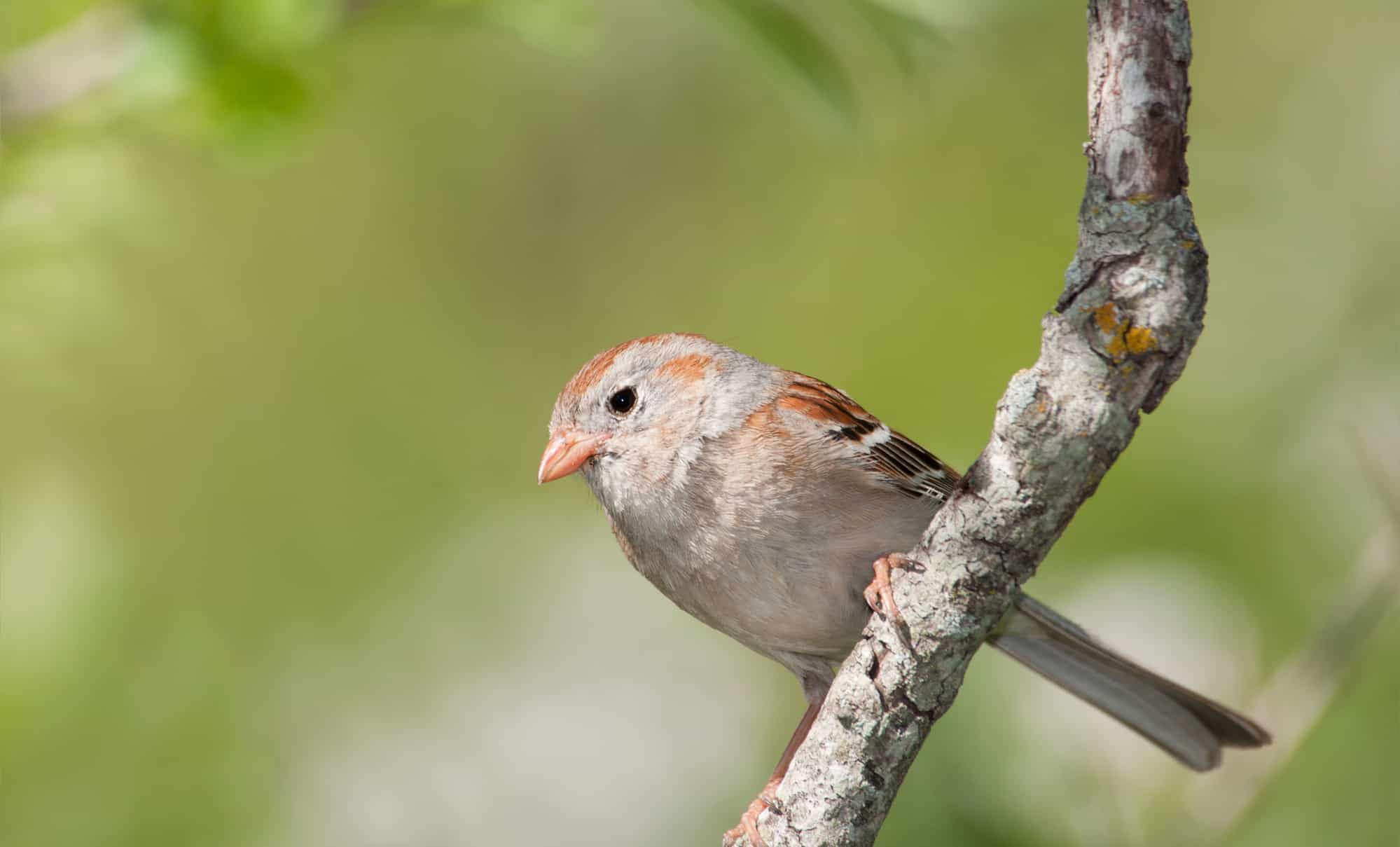
- Species Name: Spizella pusilla
- Length: 4.7-5.9 in (12-15 cm)
- Weight: 0.4-0.5 oz (11-15 g)
- Wingspan: 7.9 in (20 cm)
Another sparrow that remains in Arkansas in equal numbers throughout the year, the field sparrow isn’t so easy to identify by sight as much as by sound. Their rapidly trilling whistle is quite distinctive, and is sometimes likened to a bouncing ball coming to a stop!
During the summer, these birds like to nest in grasslands, but in winter they can be attracted to your backyard bird feeder if offered cracked corn and hulled sunflower seeds.
Savannah Sparrow
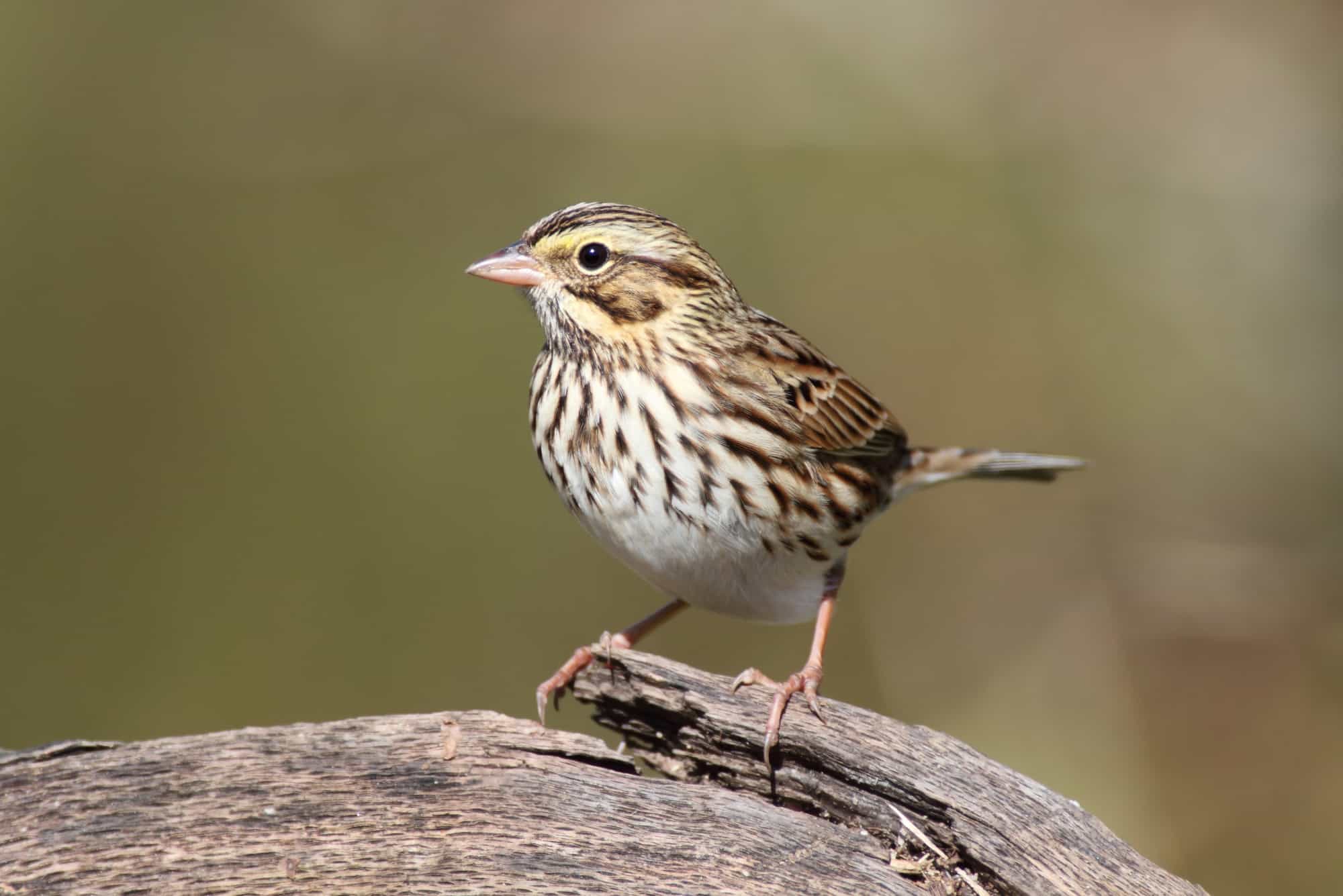
- Species Name: Passerculus sandwichensis
- Length: 4.3-5.9 in (11-15 cm)
- Weight: 0.5-1.0 oz (15-28 g)
- Wingspan: 7.9-8.7 in (20-22 cm)
Savannah sparrows are one of the most genetically diverse of all sparrow species, and their various subspecies may have slightly different plumage variations. In general, though, these medium-sized sparrows have light, speckled chests, and yellowish tinting around their eyes.
Savannah sparrows are classed as winter visitors in Arkansas, even if a few of them remain in the state until early summer. These birds prefer life out in the grasslands where they forage for wild seeds in the winter, so you’re unlikely to see them nearby human habitation.
White-crowned Sparrow
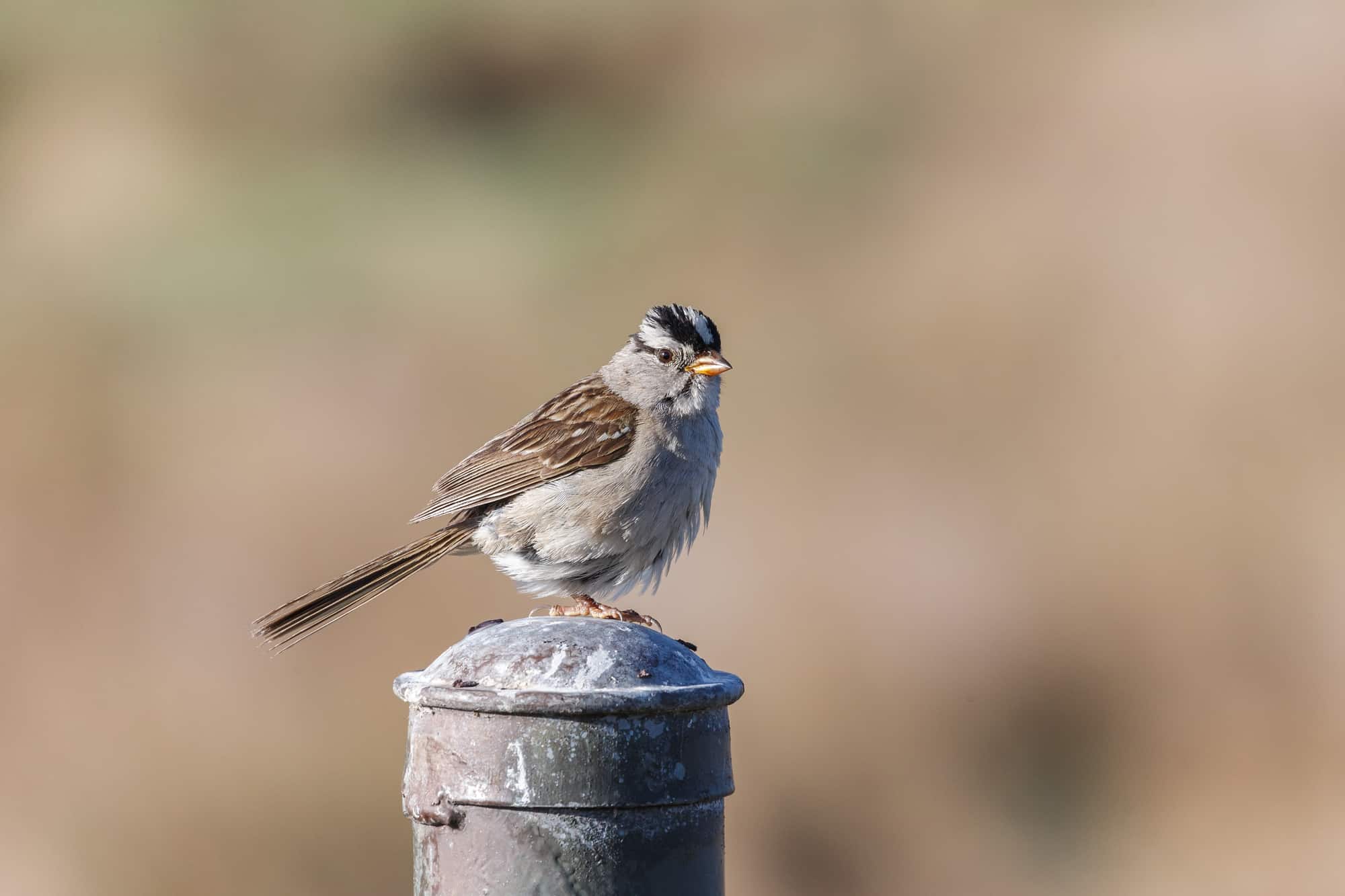
- Species Name: Zonotrichia leucophrys
- Length: 5.9-6.3 in (15-16 cm)
- Weight: 0.9-1.0 oz (25-28 g)
- Wingspan: 8.3-9.4 in (21-24 cm)
White-crowned sparrows are spotted between October and June in Arkansas when they return from their breeding grounds which extend well up into the arctic circle!
The distinctive black and white stripes on their crown and yellow bill are the easiest ways to identify these medium-sized sparrows.
After the long-flight back south, these birds will greedily peck away at seeds and the remains of peanuts dropped by other birds at your backyard feeder.
Swamp Sparrow
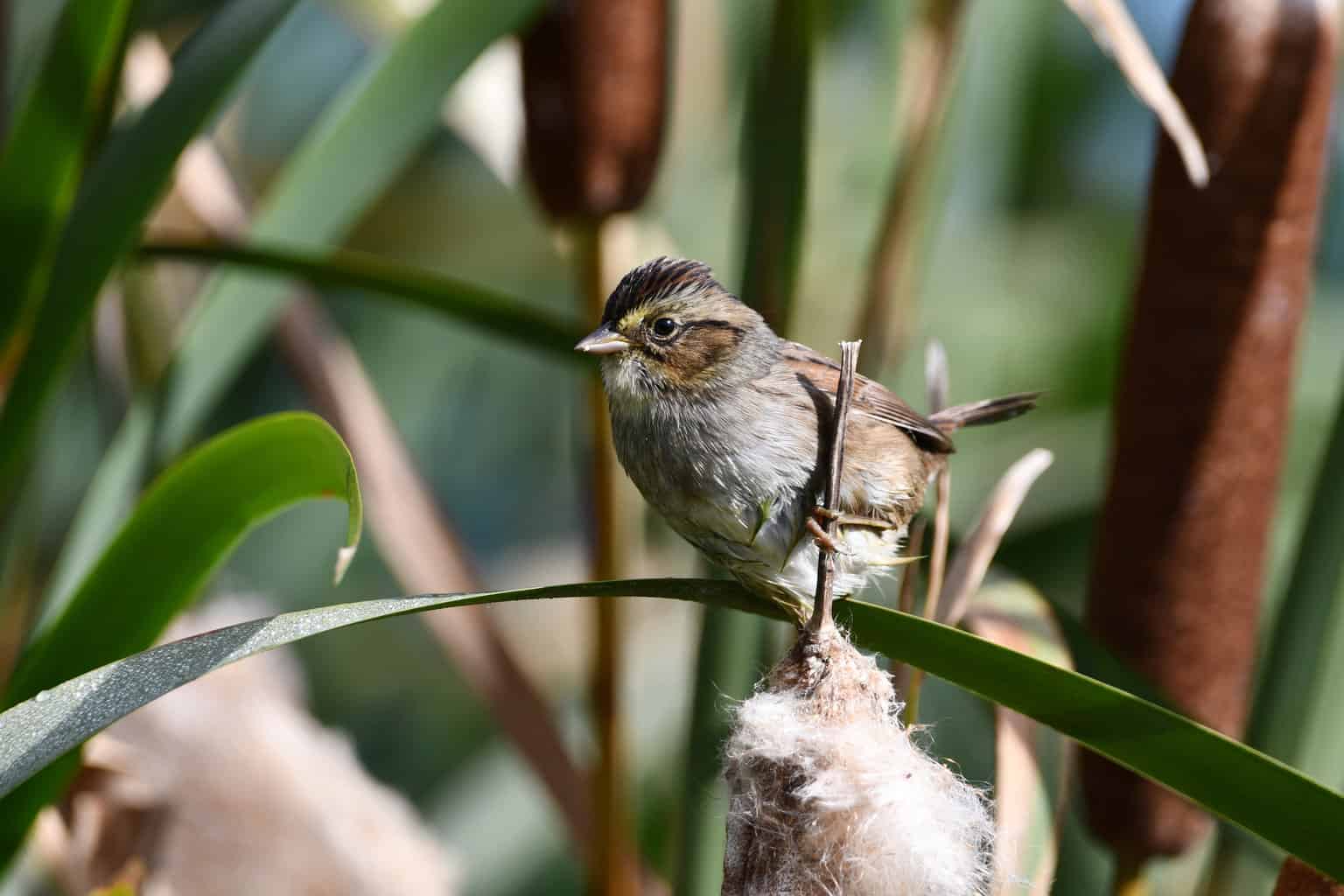
- Species Name: Melospiza georgiana
- Length: 4.7-5.9 in (12-15 cm)
- Weight: 0.5-0.8 oz (15-23 g)
- Wingspan: 7.1-7.5 in (18-19 cm)
One of the smallest sparrows in the United States, the swamp sparrow has an impressive migratory range that extends all of the way up to the north of Canada. Interestingly, though, it always remains to the east of the rocky mountains.
Arkansas is purely a wintering ground for these cute little sparrows. Their brown cap and black eye line are the best ways to identify them by sight, but they also have a singular call which, to my mind, sounds a bit like mocking laughter!
Swamp sparrows prefer to spend their time in wetlands, but may be attracted to your backyard by offering them a garden pond or bird bath.
Fox Sparrow

- Species Name: Passerella iliaca
- Length: 5.9-7.5 in (15-19 cm)
- Weight: 0.9-1.6 oz (26-44 g)
- Wingspan: 10.5-11.4 in (26.7-29 cm)
With a light, speckled chest and a wingspan of nearly a foot across, you could be forgiven for mistaking a fox sparrow for a small thrush! Their whistling song and way of scratching about in the undergrowth is also rather-thrush-like.
Fox sparrows can only be seen in Arkansas between October and April and can be attracted to your backyard by offering them dense, low-growing bushes, especially those that fruit in autumn such as chokeberries.
Lincoln’s Sparrow
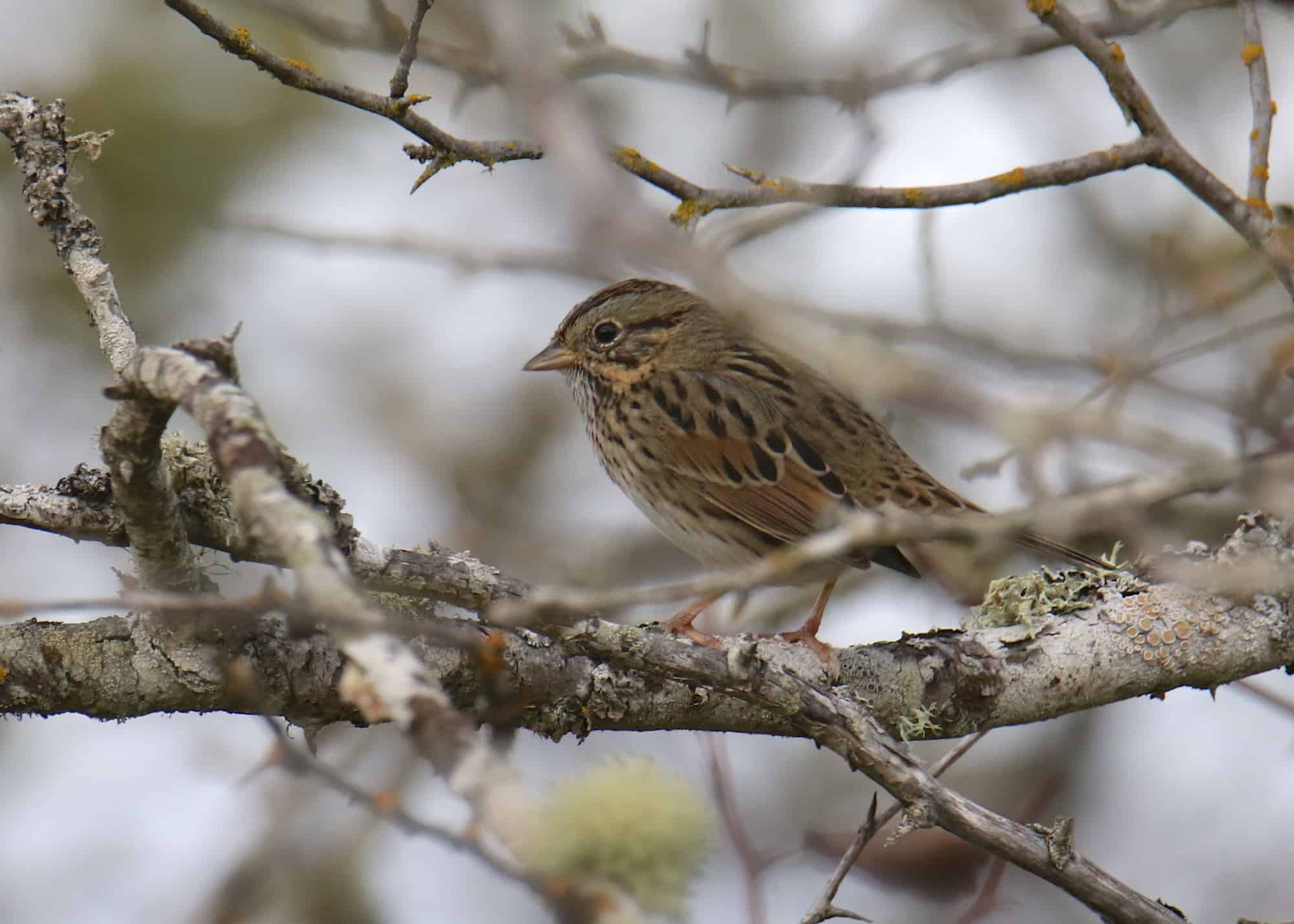
- Species Name: Melospiza lincolnii
- Length: 5.1-5.9 in (13-15 cm)
- Weight: 0.6-0.7 oz (17-19 g)
- Wingspan: 7.5-8.7 in (19-22 cm)
The delightful song of Lincoln’s sparrow is one of the most tuneful songs of any sparrow. Their sweet trills interspersed with silence casts a soothing backdrop that could even be described as therapeutic.
Their simple song is also one of the best ways to identify this plain-looking grayish sparrow. As infrequent visitors from September to May, not everyone will be lucky enough to hear these shy birds in Arkansas, but it’s something to savor if you do.
Lark Sparrow
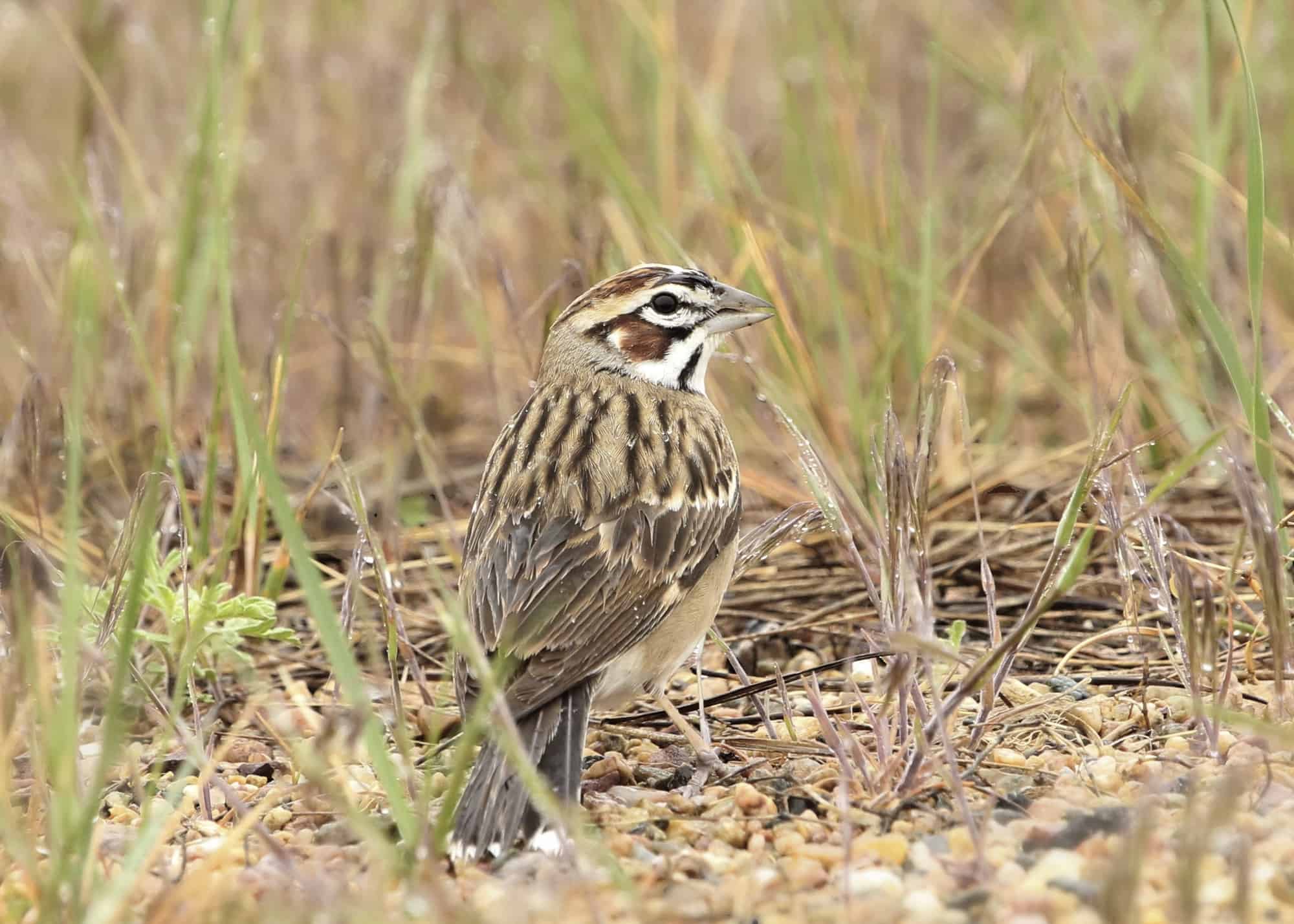
- Species Name: Chondestes grammacus
- Length: 5.9-6.7 in (15-17 cm)
- Weight: 0.8-1.2 oz (24-33 g)
- Wingspan: 11.0 in (28 cm)
Lark sparrows are a fairly rare sighting in Arkansas. You’re slightly more likely to see them in the summer than winter, though, when they build their nests either on the ground, in a tree, or rocky crevice.
These elegant birds have a large wingspan, a black-and-white striped cap, a white chest, and a stout bill. Their noisy song is a chaotic montage of whistles, trills, and metallic-sounding buzzes!
Vesper Sparrow
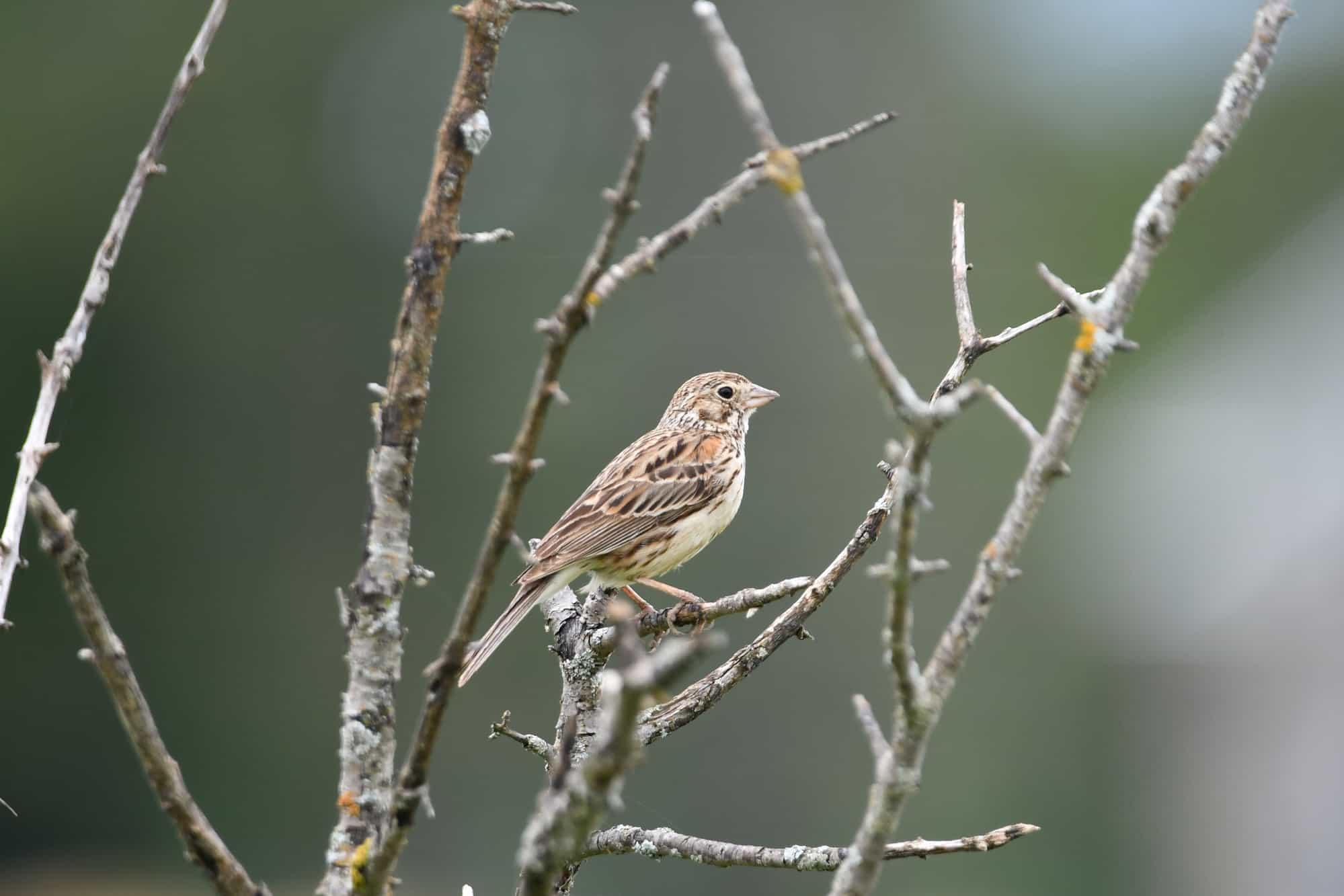
- Species Name: Pooecetes gramineus
- Length: 5.1-6.3 in (13-16 cm)
- Weight: 0.7-1.0 oz (20-28 g)
- Wingspan: 9.4 in (24 cm)
Vesper sparrows are an infrequent winter visitor in Arkansas, and their rather indistinct plumage can make them difficult to recognize. The best strategy for identification is to learn their song: a pleasant and soothing succession of sparse whistles and trills.
Before these birds leave the state in the spring, you may be lucky enough to witness the vesper sparrow’s courtship dance: the male leaps into the air, singing with wings raised in an attempt to win the charms of a potential mate!
Harris’s Sparrow
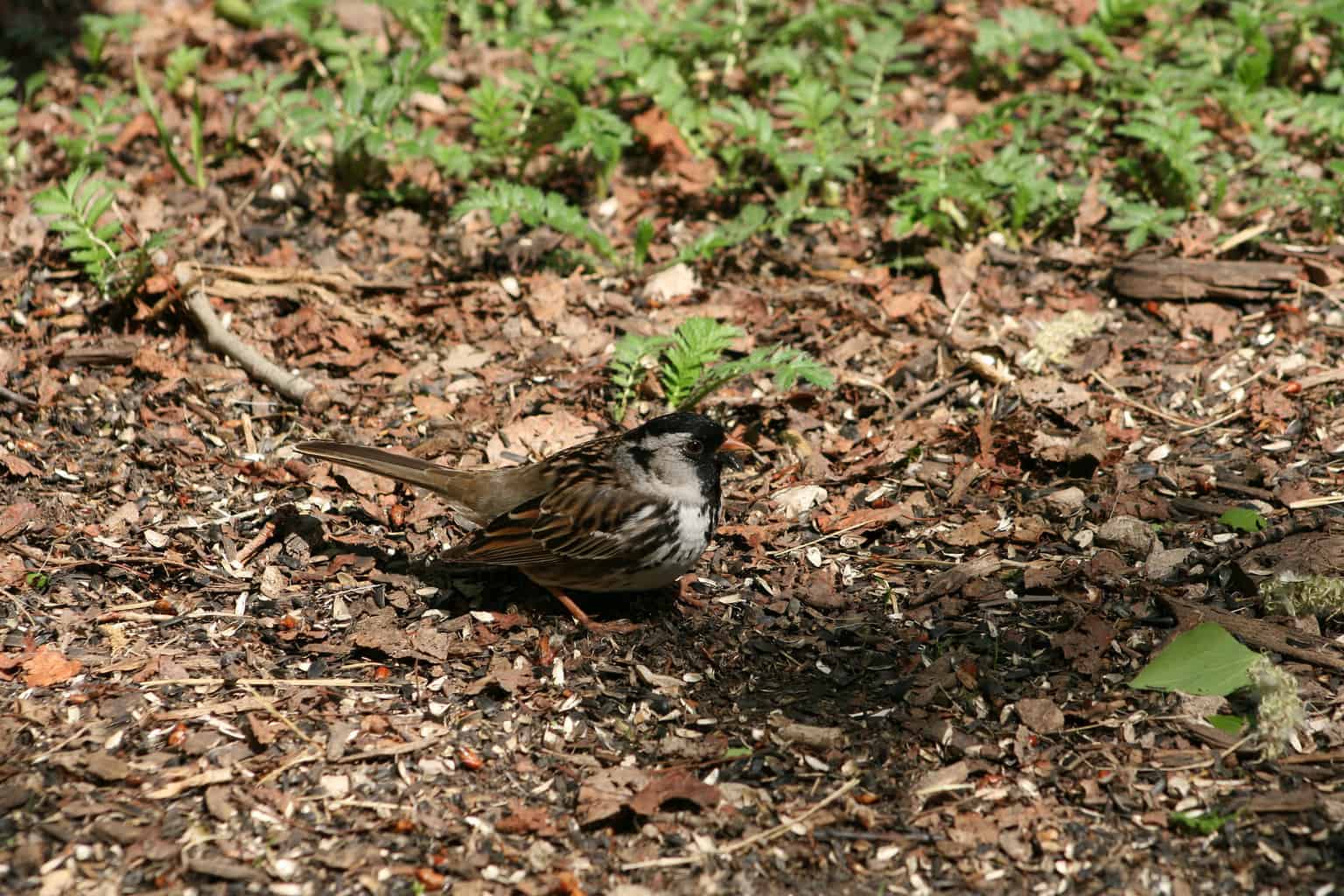
- Species Name: Zonotrichia querula
- Length: 6.7-7.9 in (17-20 cm)
- Weight: 0.9-1.7 oz (26-49 g)
- Wingspan: 10.6 in (27 cm)
Sadly, Harris’s sparrow is now considered ‘near-threatened’ by the IUCN. Despite there still being around 2 million individuals, Harris’s sparrow decline might be connected with the changing climate and ecology in its northerly breeding grounds.
They make a rare winter visitor in Arkansas, but you might be able to spot them by offering them sunflower seeds, pumpkin seeds, and flaked maize at your backyard bird feeder.
LeConte’s Sparrow
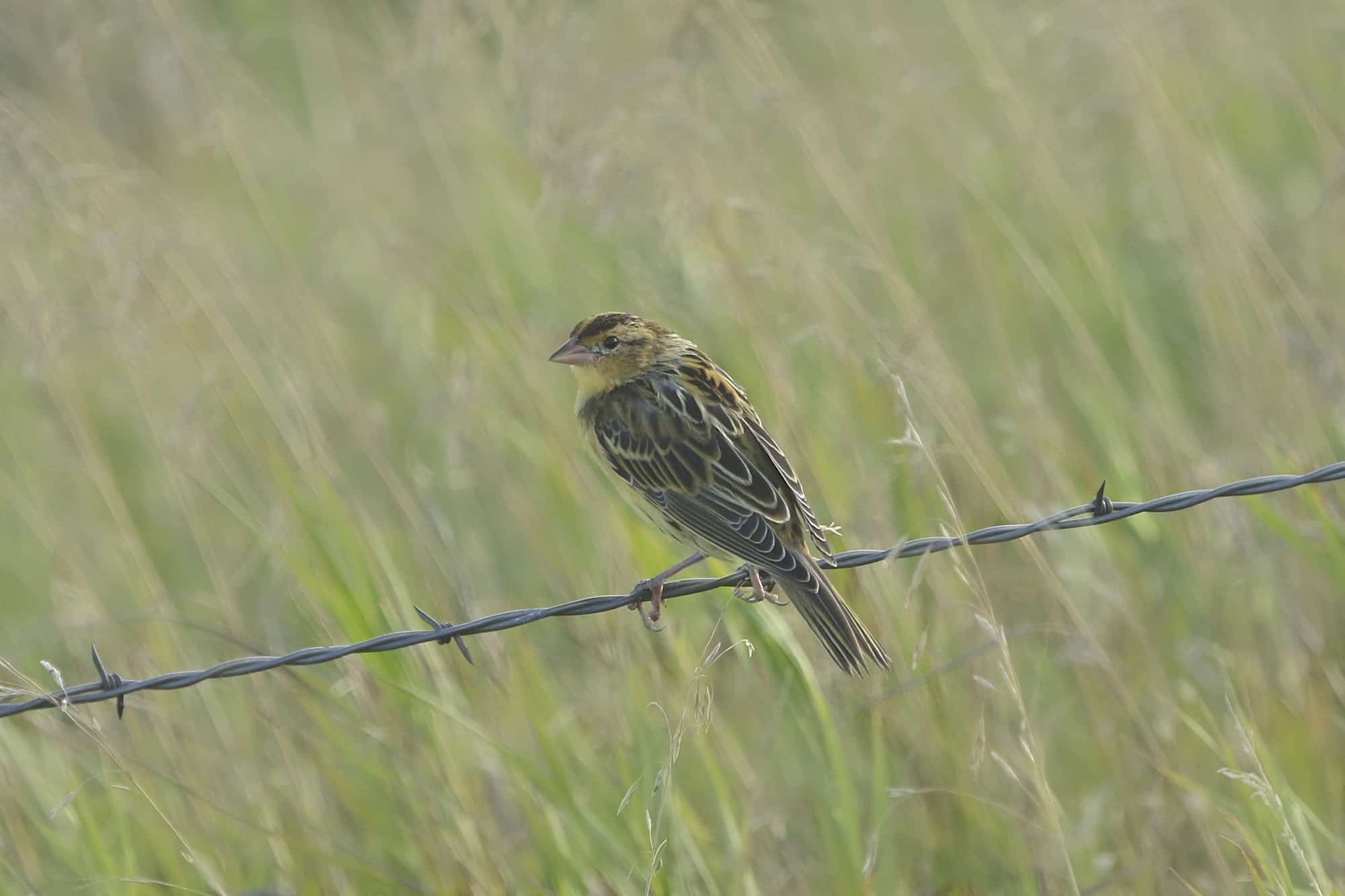
- Species Name: Ammospiza leconteii
- Length: 4.7-5.1 in (12-13 cm)
- Weight: 0.4-0.6 oz (12-16.3 g)
- Wingspan: 6.3-7.1 in (16-18 cm)
Another miniature bird, LeConte’s sparrow only weighs around half an ounce! Apart from their diminutive size, they can be recognized by the broad, brown streaks on their backs and wings and yellow-orange tinted heads.
A rare spotting in Arkansas, but you might be lucky enough to see one during the winter here. Listen out for their grasshopper-like buzzing call.
Grasshopper Sparrow
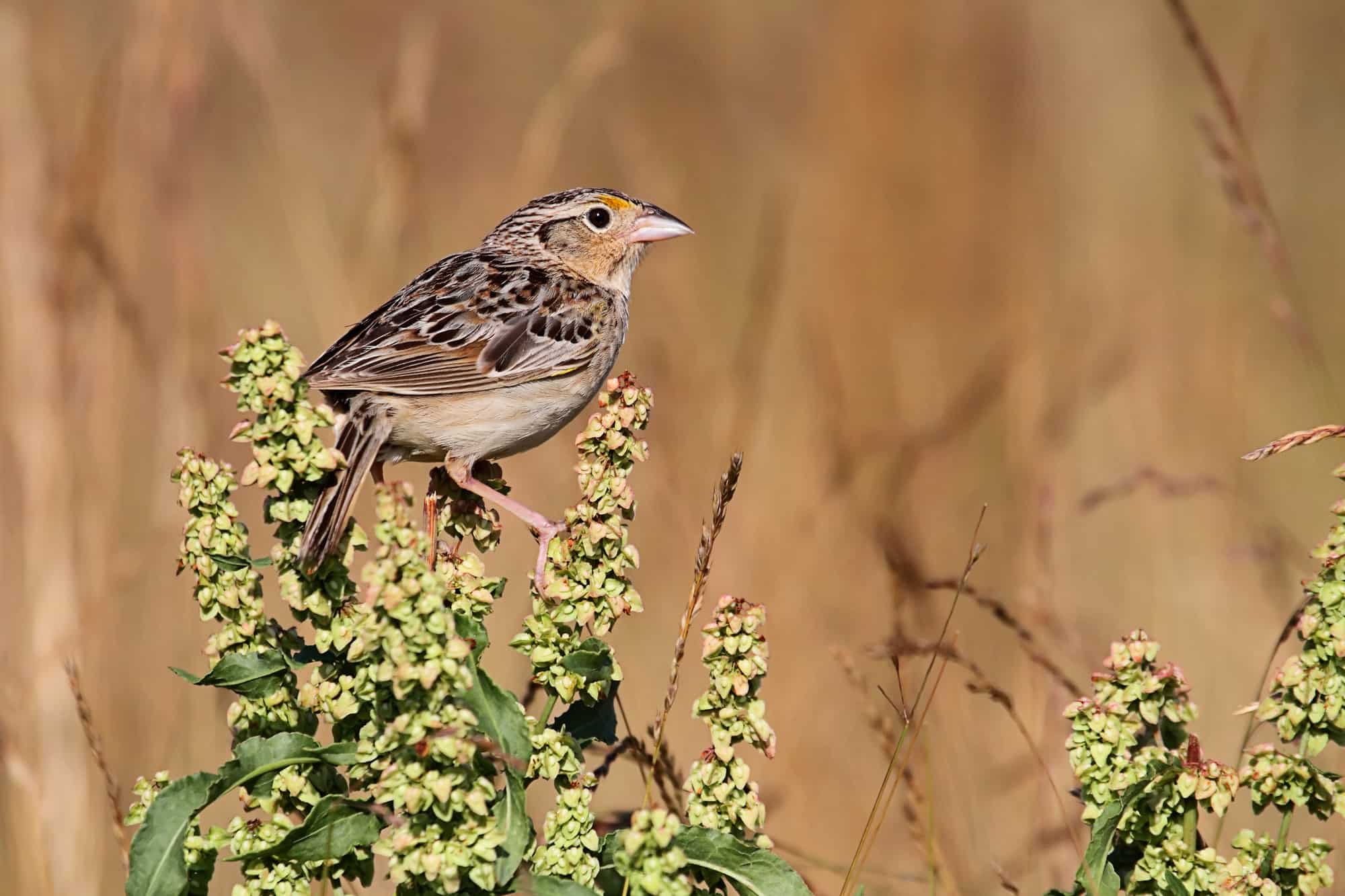
- Species Name: Ammodramus savannarum
- Length: 4.3-4.5 in (10.8-11.5 cm)
- Weight: 0.5-0.7 oz (14-20 g)
- Wingspan: 7.9 in (20 cm)
Like LeConte’s sparrow, the grasshopper sparrow is a tiny bird with a grasshopper-like call, hence its name!
Incidentally, grasshoppers also make up a large part of this bird’s diet in summer. This is the time of the year when you’re more likely to see this bird in Arkansas, as they will occasionally nest here. Only very small numbers remain in the southern part of the state over winter.
Grasshopper sparrows are sadly declining at a rapid rate in America, with an annual decline of 3.48% recorded recently. The loss of native grasslands to intensive agriculture is thought to be the main culprit for their demise. Hopefully, conservation initiatives can help revive populations to their former abundance.
Spotted Towhee
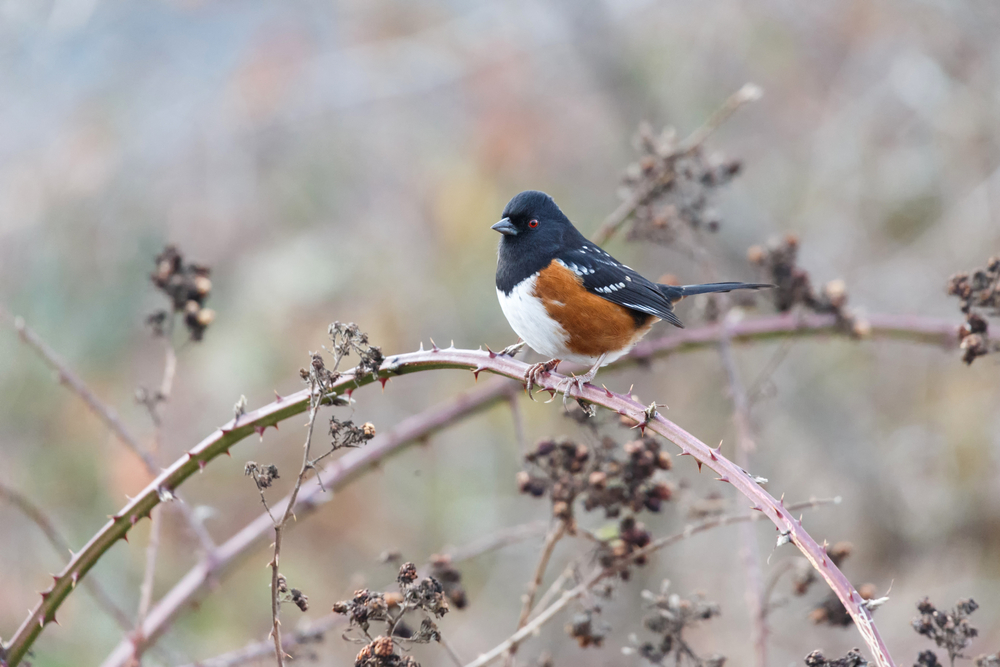
- Species Name: Pipilo maculatus
- Length: 6.7-8.3 in (17-21 cm)
- Weight: 1.2-1.7 oz (33-49 g)
- Wingspan: 11.0 in (28 cm)
Although there are few states where you can find both eastern and spotted towhees, Arkansas has them both. This presents a problem for identification since the two birds look so alike!
The most reliable indicator is that the far more common eastern towhees have fewer, more stripey, white patches on their wings, whereas the rarer spotted towhee’s wings have more prominent white spots.
Other than that, the two birds are similar in size and behavior. Calls of both species include cat-like mewing sounds, and can be influenced by other local birds!
American Tree Sparrow
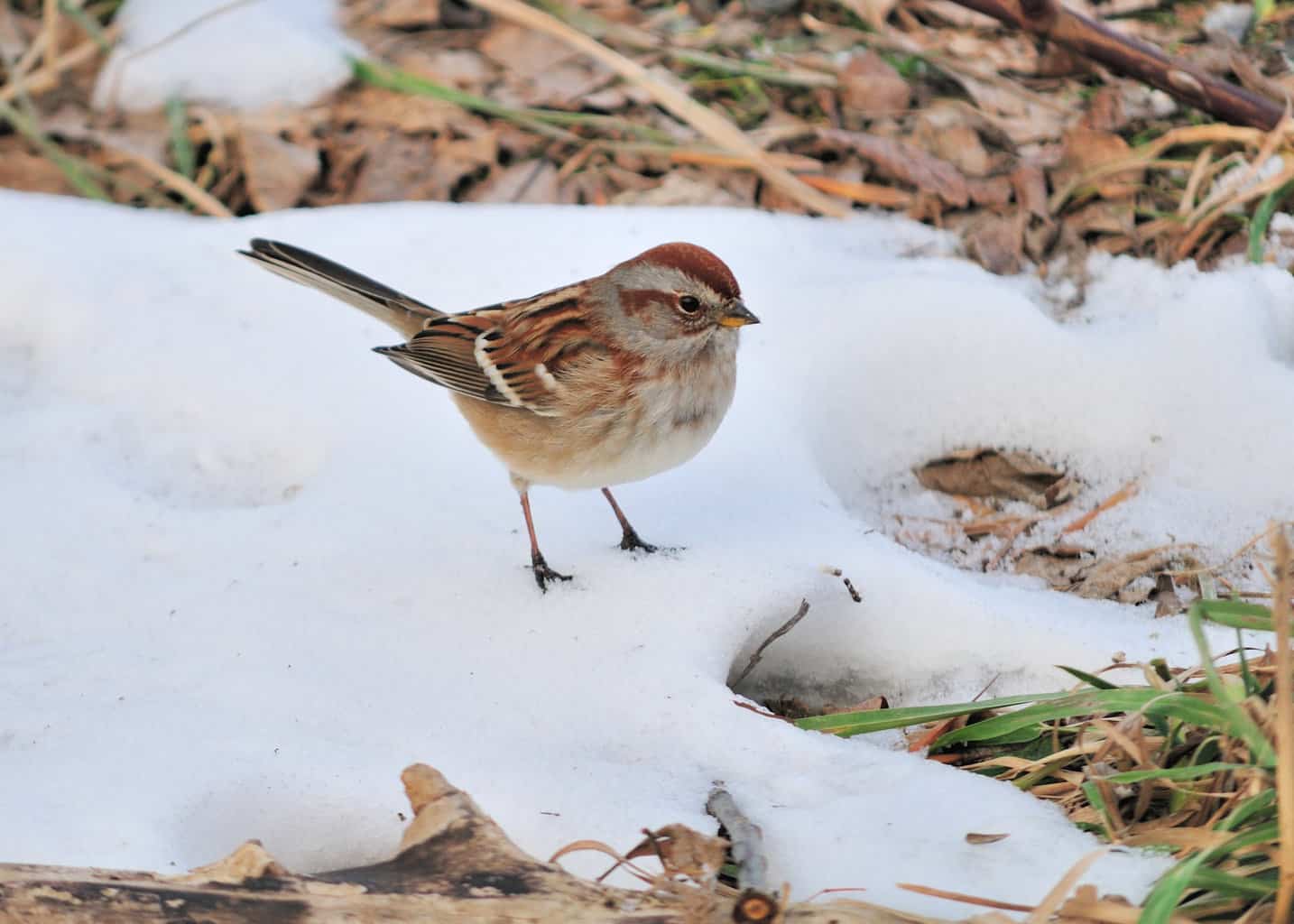
- Species Name: Spizelloides arborea
- Length: 5.5 in (14 cm)
- Weight: 0.5-1.0 oz (13-28 g)
- Wingspan: 9.4 in (24 cm)
The north of Arkansas is at the very southern end of the American Tree Sparrow’s winter range, meaning you’d be lucky to see them here. These hardy birds breed well into the arctic circle and even overwinter in some parts of Canada.
If you’re trying to spot this medium-sized sparrow, don’t go looking in the trees! Tree sparrows are mostly ground-dwelling birds and simply got their name from European settlers who thought that this bird resembled their native tree sparrows.
Henslow’s Sparrow
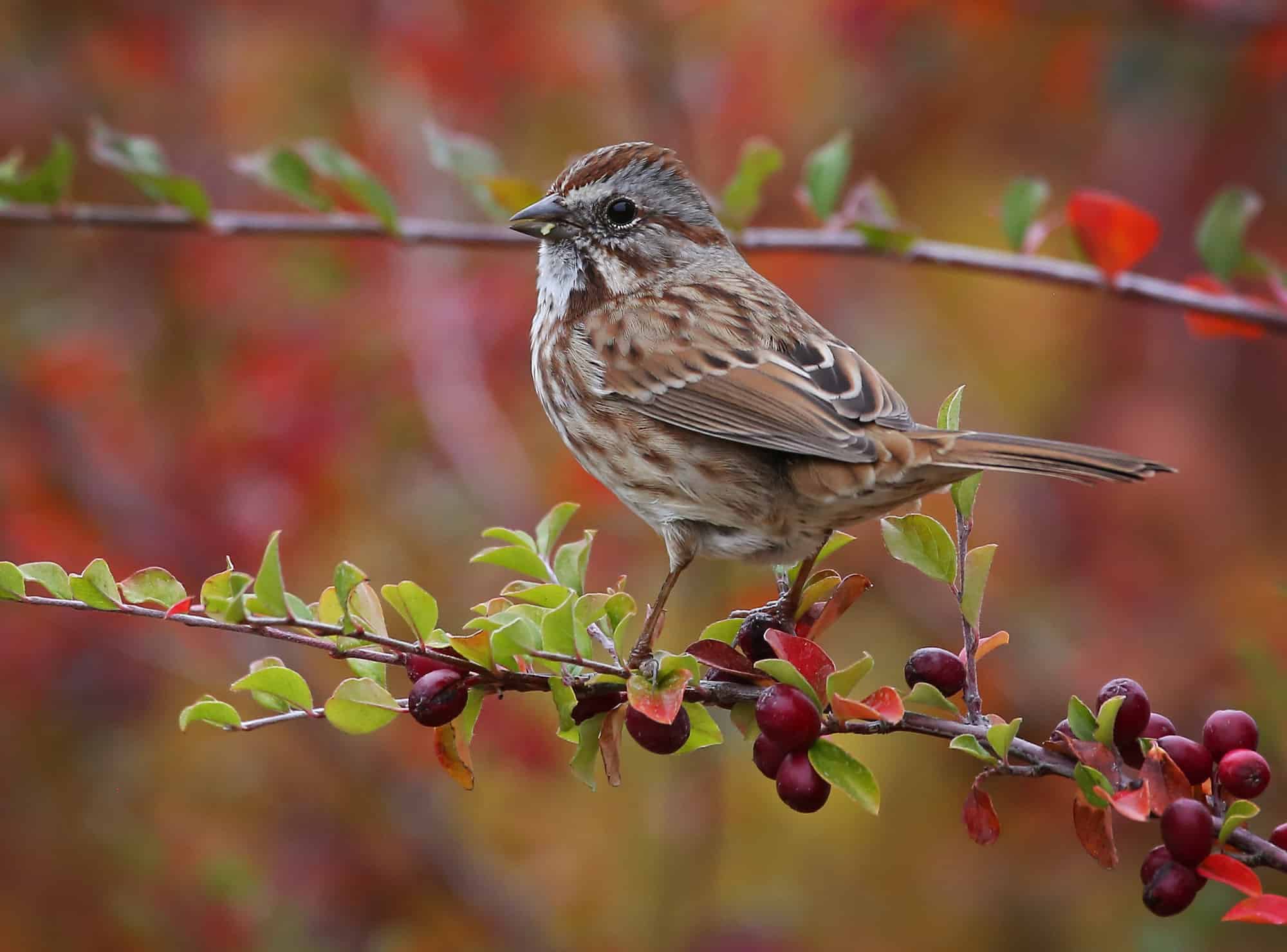
- Species Name: Centronyx henslowii
- Length: 4.75 – 5.25 in (12–13 cm)
- Weight: 0.5 oz (14 g)
- Wingspan: 7 – 7.5 in (18 – 19 cm)
Henslow’s sparrows are rarely seen in Arkansas and that must be partly due to how good this bird is at hiding! With its greenish-yellow head and speckled plumage, this tiny sparrow is highly camouflaged and prefers wetland habitats far from human contact.
Even the squeaky call of this timid bird is very discreet, and when scared, they are more likely to run through dense grass than to fly.
Bachman’s Sparrow
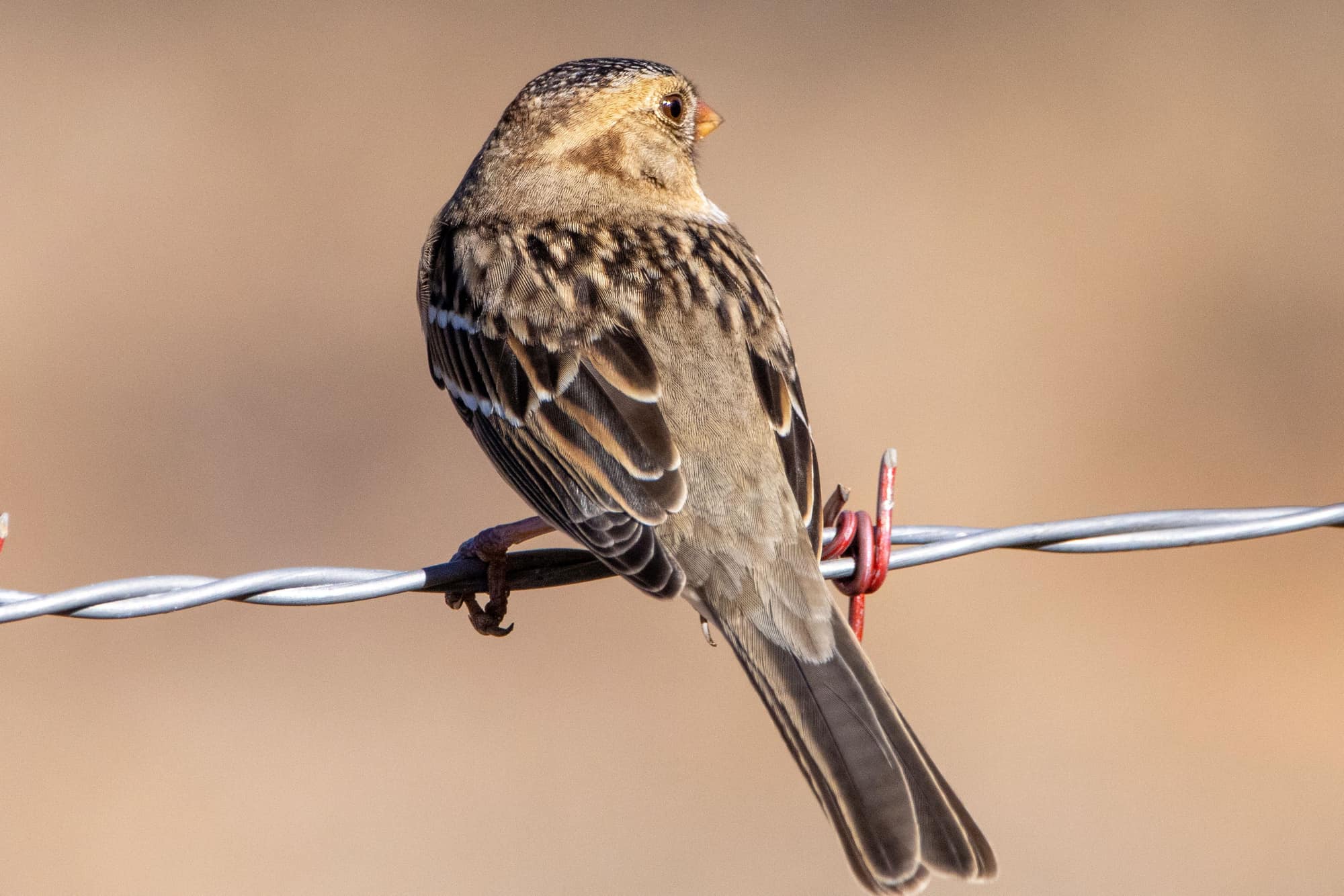
- Species Name: Peucaea aestivalis
- Length: 12.4 -15.2 cm (4.9 – 6 in)
- Weight: 18 – 22 g (0.6 -0.8 oz)
- Wingspan: 18.4 cm (7.2 in)
Sadly, Bachman’s sparrows are considered near threatened by the IUCN, and habitat loss may be partly to blame for their decline.
Their populations are contained only within the southeastern United States, from Florida to Eastern Texas. In Arkansas, they can be found all year in the south of the state but only in the north during the breeding season. Pine forests are their preferred breeding ground.
In no part of Arkansas are Bachman’s sparrows common, though, and the best way to locate them is by their song – a single whistle followed by a sweet trill.
A Few That Got Away!
The last few sparrows on our list are rare sightings in Arkansas, but there are a few other members of the family that can occasionally be seen here, too.
Spotted by only around one in a thousand bird watchers, the rufous-crowned sparrow should be considered highly prized sightings in Arkansas, even if they are more widespread elsewhere.
Among sparrows that merely pass through the state on their spring and fall migration routes, the most likely you’ll see are the clay-colored sparrow and Nelson’s sparrow.
Conclusion
Arkansas’s rich and varied landscape is home to a wealth of sparrow species. From the ever-present flocks of house sparrows in residential areas to the near-threatened Bachman’s sparrow nesting in pine forests, there are endless opportunities to encounter these cheerful birds.
To find out more about other beautiful birds in Arkansas, such as the northern cardinal, ruby-throated hummingbird, and green heron, don’t miss our dedicated guide here.

